Regional Focus: Leitrim County Council







Lar Power, Chief Executive at Leitrim County Council, sits down in his Carrick-onShannon headquarters overlooking the Leitrim/Roscommon border, defined by the River Shannon, to discuss the local authority’s efforts to develop the county.
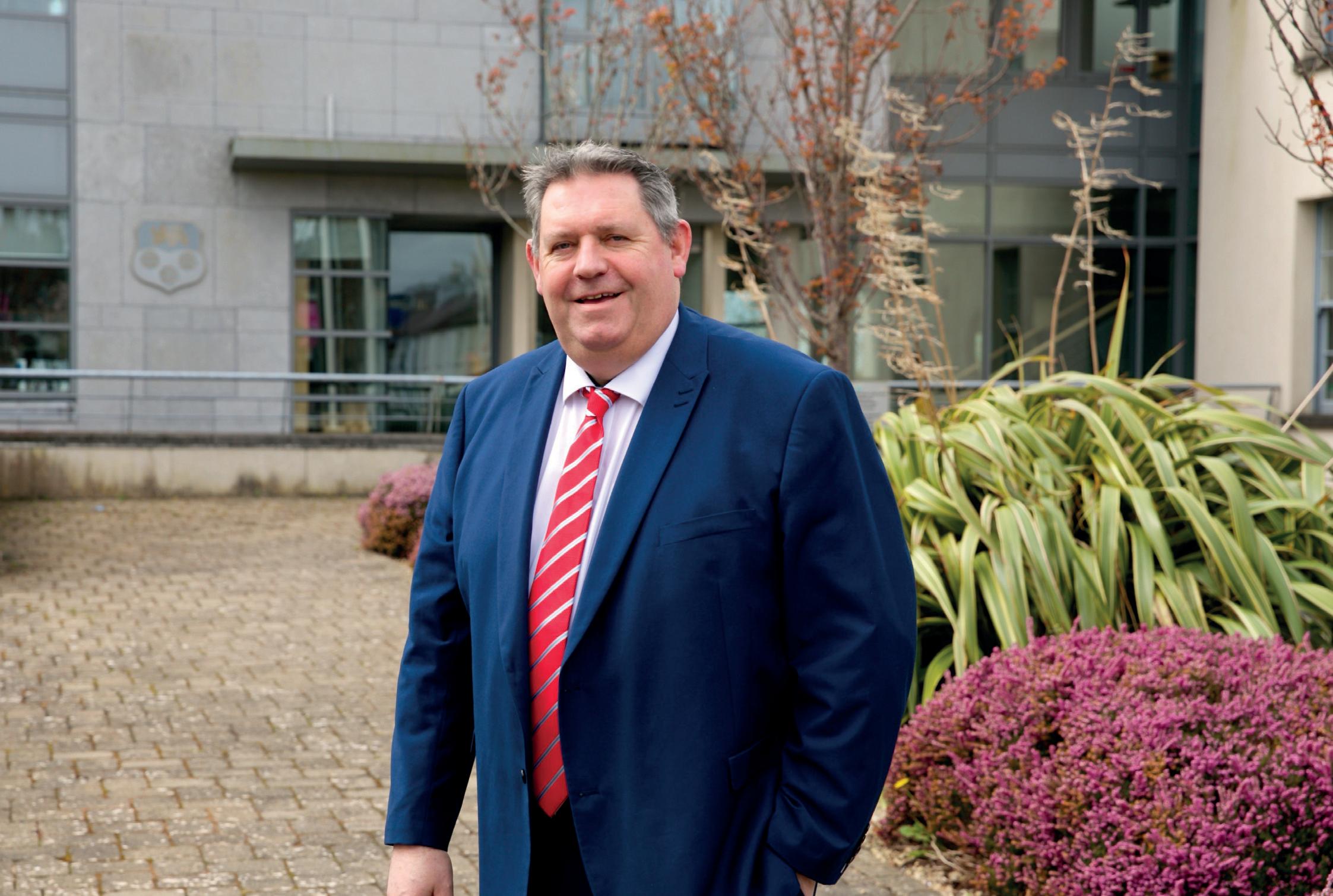
Spanning 1,608km2 and encompassing 27 towns and villages, County Leitrim is “a place of unspoiled landscapes and breathtaking scenery”, Power observes, adding: “I consider the county to be a destination, and each town and village as a sub destination.”
Outlining Leitrim County Council’s mission, he asserts: “Our role is defined by placemaking. Our collective focus, therefore, is ensuring that County Leitrim can reach its full potential on behalf of the people who choose to live, work, visit, and invest here.”
Paying tribute to his “agile, dynamic, and committed” colleagues in Leitrim County Council, as well as the “excellent elected councillors”, the Chief Executive insists: “The partnership between the county councillors and the staff is unrivalled and each policy we implement, or challenge we tackle, is informed by the overriding objective of propelling County Leitrim forward.”
In spite of its relatively small geographic area and population, County Leitrim has “an ambitious and very aggressive” capital investment programme for 2022 until 2027. Totalling €387 million over six years and securing “full commitment of our elected councillors”, the capital investment programme spans urban renewal, economic development, tourism, housing, flood relief, and transport infrastructure.
“While Leitrim County Council is not a wealthy local authority, the financial management of the county over many decades has been exceptionally prudent and the council has always lived within its means.
“Therefore, while we have embarked on an ambitious capital programme, we have collectively ensured that the county will retain its financial stability. Despite being required to make challenging financial decisions, the council, to its immense credit, has never
shirked that responsibility,” the Chief Executive insists.
At the same time, Leitrim County Council has also embarked upon an extensive urban renewal programme throughout the county. “Our public realm investment in primary tier towns is aimed at encouraging town centre development, tackling vacancy, and increasing footfall, ultimately enhancing placemaking and unlocking private sector investment,” Power details.
Several projects within this programme include a Urban Regeneration and Development Fund (URDF) investment of €10.24 million in Carrick-on-Shannon under Project Ireland 2040, the ongoing €3.3 million redevelopment of Ballinamore Junction railway buildings into a digital hub and youth space, a €2.4 million investment in Manorhamilton public realm, and a €3 million investment in Mohill public realm.
With three national primary roads – the N4 Dublin-Sligo, the N15 Sligo-Derry, and the N16 Sligo-Enniskillen – traversing the county, alongside the Dublin-Sligo railway line, which operates eight services in each direction daily and stops at Dromod and Carrick-on-Shannon – Leitrim is “well connected nationally”.
“From an international connectivity perspective, Carrick-onShannon, for instance, is just 40 minutes away from Ireland West Airport, with direct connections to the UK and Europe. It is only two hours away from Dublin and slightly over two hours away from Shannon Airport and Belfast International Airport. They are very important arteries of connectivity for us,” Power remarks.
Bordering County Roscommon at the Cumann na mBan Bridge over the Shannon, Leitrim’s county town of Carrickon-Shannon fulfils a regional function, with a population catchment pervading county boundaries.
“Carrick-on-Shannon is a beautiful town which serves as an economic and social hub for the wider north west region. Consequently, it is a town that punches far above its weight in terms of size and population and is the envy of many towns in Ireland,” Power reflects.

“The county town is also a critical access point for the River Shannon. With around 130 cruisers for hire, Carrick-onShannon is the marina capital of the north west and each year, from the Easter weekend onwards, the cruisers become very active and remain hugely active, well into September.”
Famously, Carrick-on-Shannon is a popular destination for hen and stag parties. “That is facilitated by rail connection,
but people also come from the four corners of Ireland by other means and enjoy what this town has to offer at the weekend,” Power explains, adding: “Groups engage in a range of activities, often relating to the River Shannon’s water sport amenities, professionally delivered and managed. It is a very popular trip for people to make and that experience generates many repeat visitors.”
As such, the county’s status as a tourist destination is a primary driver of the local economy. In 2019, pre-Covid, tourism in County Leitrim totalled approximately 250,000 visitors with a combined revenue of €77 million.

Indeed, having pioneered the concept, County Leitrim remains the only designated area in the Republic for slow adventure tourism. “What that means is that we want tourists to come to Leitrim and witness its unspoiled landscape and breath-taking scenery at a pace that allows them to fully absorb it.
“We suggest that individuals set down their mobile phones and take the time to enjoy where they are. As a gateway to the River Shannon, Carrick-on-Shannon is the river cruise hire capital of Ireland.”
The county also boasts the first blueway of its kind in Ireland. Developed in partnership with Waterways Ireland, the Shannon Blueway enables tourists the opportunity to kayak, canoe, paddle board, cruise, walk, cycle, and fish along the 8.3km stretch between Drumshanbo and Leitrim Village.
“Each policy we implement, or challenge we tackle, is informed by the overriding objective of propelling County Leitrim forward.”
Lar Power, Chief Executive, Leitrim County Council
Meanwhile, as the lead local authority driving the development of the planned Sligo to Enniskillen Greenway which traverses a highly scenic portion of the county, Leitrim County Council has an objective of utilising the disused Sligo, Leitrim and Northern Counties Railway (SLNCR) line to deliver a 75km long greenway between the two towns.
“Traversing the counties of Sligo, Leitrim, Cavan, and Fermanagh, it is a €40 million project with full government support at the very highest level,” Power notes, adding: “Currently at route selection stage, the project will ensure cross-border connectivity while simultaneously unlocking the full potential of tourism assets in north County Leitrim.”
At the same time, tourism aside, Leitrim is home to several indigenous and multinational firms spanning MedTech, advanced manufacturing, and international financial services. Working in collaboration with development agencies such as Local Enterprise Office Leitrim and Enterprise Ireland, as well as IDA Ireland, Leitrim County Council endeavours to support indigenous and inward investment in the county.
As an optimal location to relocate and expand operations, including second site or satellite offices, Leitrim can offer employment with both indigenous and FDI employers operating on a global scale. The county also offers a portfolio of affordable office accommodation and access to graduates from the Atlantic Technological University (ATU) Sligo.
“Aimed at a range of employees across MedTech, advanced manufacturing, and professional financial services, our Relocate to Leitrim campaign outlines what Leitrim has to offer to domestic and international firms.
“In 2022, FDI employment increased by 6.3 per cent in the region and many companies including MCI and Vistamed are actively recruiting. Indigenous entrepreneurs, including King & Moffatt and Cora Systems, have also grown their operations into international companies of scale while headquartered in County Leitrim. As global industry leaders, they provide a diverse range of senior level roles in engineering, applied sciences, logistics, and supply chain management, offering competitive career progression opportunities.
Meanwhile, amid an investment €56 million in high-speed broadband infrastructure in the county under the National Broadband Plan, a network of nine digital hubs throughout Leitrim offers hot desk, co-working, and offices for those looking for seeking flexible work accommodation, including start-ups.
In addition, the 112,000ft2 Carrick-on-Shannon Business Campus, a turnkey office accommodation centre on the Dublin Road in Carrick-on-Shannon, was recently acquired by Leitrim County Council, with €7.2 million in support from the Rural Regeneration Development Fund.
Previously home to MBNA Corporation, the local authority is now investing an additional €3.4 million to deliver a state-of-
the-art collaborative workspace for prospective SME and multinational tenants.
Already home to financial services firm, Avant Money, which employs 200 people, it is intended that the campus will provide a supportive ecosystem for firms deciding to locate themselves in Ireland’s north west. Phase one of the refurbishment project incorporates a high-quality fitout of office workspace for 150 employees aimed at firms of more than 10 employees.
“Leitrim County Council was successful in securing the Carrick-on-Shannon Business Campus in November 2022,” Power comments, adding: “We envisage that the campus will become a natural home for growing indigenous companies that want to relocate from an incubation space, such as The Hive. It will also be a hub for internationally trading companies.”
Just 25km from Manorhamilton and 55km from Carrick-onShannon, ATU Sligo is the preferred choice for third-level students from County Leitrim. With a talent pool of over 3,000 graduates per annum, the designation of university status to the ATU, which includes the campus at Sligo (formerly IT Sligo), is critical for regional development and inward investment in the north west.
“With collaboration between ATU Sligo and The Hive –Leitrim’s Technology Enterprise Centre – already well established, work is ongoing to deepen the relationship and expand the ATU’s offering into County Leitrim with the objective of cultivating the local talent pool and improving access to third-level education,” the Chief Executive emphasises.
“Overall, Leitrim offers an unparalleled quality of life for people who choose to live here, while those who come to visit simply do not want to leave. Our vision is to secure as many resources as we can and sweat our existing assets to ensure that County Leitrim is optimally positioned for a very prosperous future,” Power concludes.

A native of County Wexford, Lar Power graduated from UCD as an engineer in 1991. Following graduation, he entered the local authority sector, initially working for Wexford County Council, and subsequently in Waterford City and County Council, before moving to the north west and taking on the role of Chief Executive of Leitrim County Council in 2018.
County Leitrim is the most sparsely populated of Ireland’s 32 counties, although it has a population growth rate among the highest in the State and higher than any other Connacht counties.

The County is well connected via road to its neighbouring counties, and has direct roads to both Dublin and Derry. Its relative proximity to Ireland West Airport means that Leitrim has accessibility for travel to Britain, Germany, Spain, Portugal, and Italy.
These statistics have been compiled by figures from the Leitrim County Development Plan 2023-2029 and bulletins from the Central Statistics Office (CSO).
County Leitrim population: 35,087 – smallest in Ireland
Population density: 20.1/km2 – Lowest in Ireland
Population growth: 9.5% between 2016 and 2022 – 4th fastest growing population in the State and fastest growing in Connacht
Source: CSO, 2022
Around 60% of the county’s adults were in the labour force in 2016 Half (50.7%) of the county’s adults were ‘at work’, below the 53.4%
national average
10.3% self-employed, compared with national average of 8.3%
18.1% retired compared with 14.5% in the State Jobs to population ratio 0.24, compared to State average of 0.41 The number of people both living and working in Leitrim with this form of educational attainment increased very strongly to 2,363 (43.8%)
Source: Leitrim County Development Plan 2023-29
Sligo-Dublin railway runs night times daily, includes a stop in Carrick-on-Shannon
Train to Dublin takes 2 hours
Ireland West Airport (Knock) 40 minutes’ drive away 2 hours’ drive away from Dublin Airport, Shannon Airport, and Belfast International Airport
N4 (Dublin-Sligo), N16 (Sligo-Enniskillen), and N15 (Sligo-Derry) all pass through Leitrim
437 people (11.6%) living in Leitrim and working in other counties
133 people living in Leitrim commute to work in the North
Source: Leitrim County Development Plan 2023-2029
Carrick-on-Shannon Chamber of Commerce’s President Colm McGrath sits down with Ciarán Galway and Odrán Waldron to discuss the effects of Covid on business in Leitrim, a revival of the west, and how businesses are adapting to challenges such as inflation and retention of young people in the area.

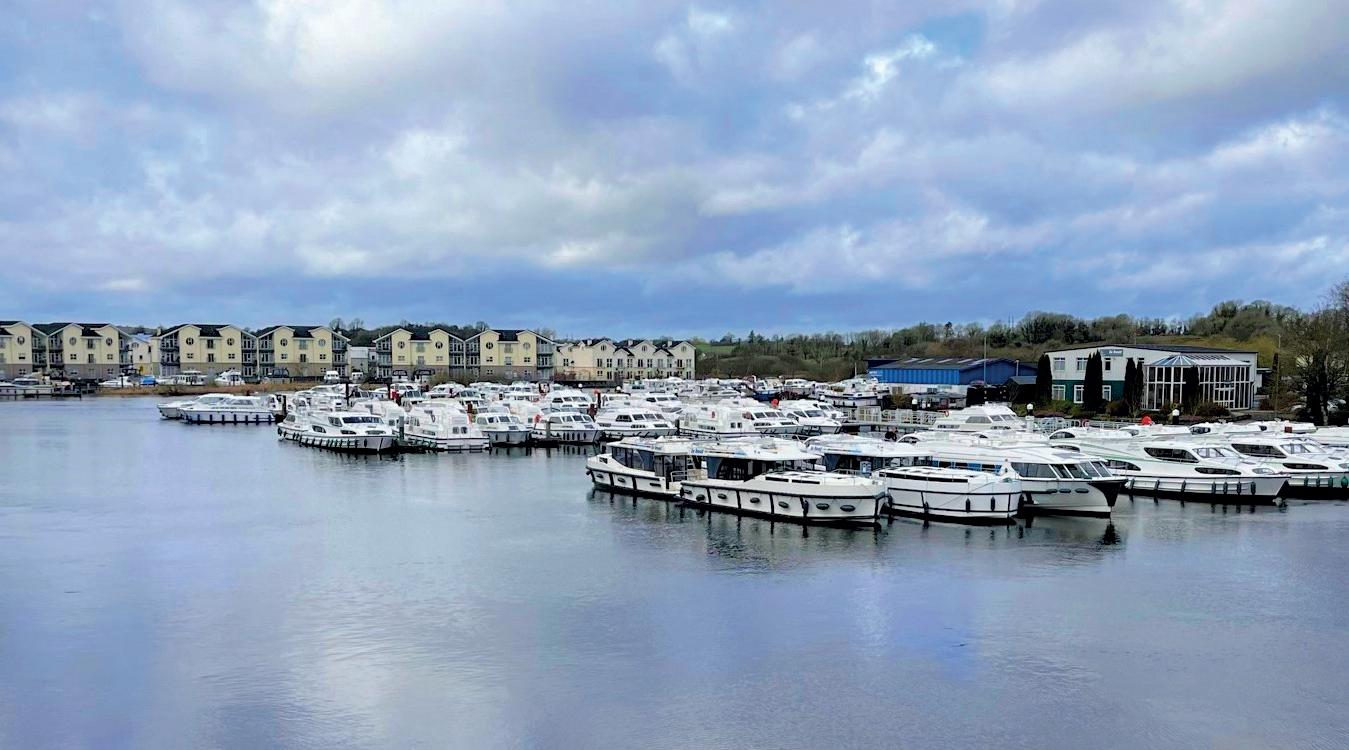
Originally a Dubliner, McGrath’s time in Leitrim has encompassed challenging periods for the county, including the financial crisis and the Covid-19 pandemic, having moved to the area in 2005.
McGrath and his wife took over a local insurance company, Brady Insurance, and have grown it from employing six people to now having a full-time staff number of more than 40, with the company having morphed into three different businesses broadly servicing the leisure, entertainment, and construction sector.
“When I first arrived here in 2005, every night was like a Friday night. We had hundreds of people that were working here in MBNA, they would have staff nights out on a Tuesday, Wednesday, or Thursday, and there were many who would come out to view the football, but that has all changed.”
McGrath observes an “inverted positivity” which has emerged from the Covid-19 pandemic, with an increase in remote workers moving to the area to take advantage of the cheaper costs of housing.
He further makes the case that business can thrive being based in Leitrim: “I am not expecting Google to be expanding here but there is no reason why other companies which are based in Dublin could not have some people working in Leitrim and having a hub either here or in the surrounding towns.
“It would be more cost-effective for those companies, with office space being cheaper and their employees would get a bit more bang for their buck.”
Despite this potential, however, McGrath states that challenges remain which existed for the county long before Covid. “The EU has classified the north-west of the State as a ‘lagging region’.
“Government needs to be seen to invest in the northwest, hence we have seen a lot of funds coming from government and the EU for minor projects over the last 12 months, but they have to be seen to step up now on the infrastructure projects and start to grow it via investment.”
Emphasising the potential opportunities for the region with the expansion of remote work, McGrath says: “When you talk to people working and living in Dublin, they all tell you about how expensive a place it is to live now. Even if you are well off enough to be able to afford a house it is very difficult to even find somewhere to buy one.”
Sitting in the Landmark Hotel, with the River Shannon and the town’s public marina to his left through the window, McGrath reflects on Leitrim’s strong tourism sector, particularly water-based activities: “The big thing there, would be if there is a continued investment into the blueway, which is combined greenway and waterside type investment where people can canoe and boat as well and walking and cycling.
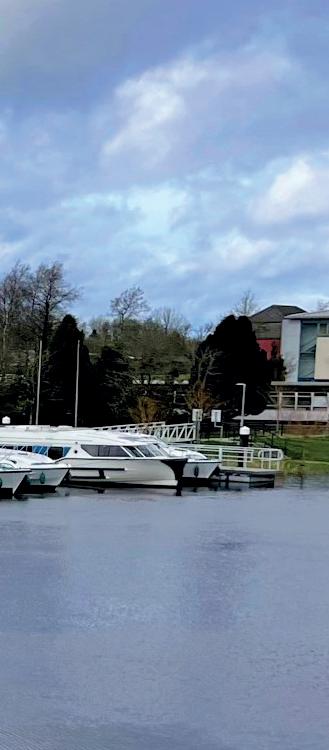
“I believe that that kind of thing could extend as far as Enniskillen, at least with the greenway. That would be fantastic and could link and should go as far as Sligo this would bring a lot of tourism here, with Leitrim benefitting by being the central point of the whole project.”
McGrath is optimistic for the future of business in Leitrim and emphasises the role that can be played by the Chamber of Commerce in achieving this, with the organisation currently in the process of hiring a full-time CEO and pushing for collaboration with other towns across County Leitrim.
“My colleague, Paul O’Brien, who is acting CEO at the moment, came up with a very good vision for tourism and generating money for the Chamber called the Carrick Camino. That has generated a lot of funds and will allow us to get a full-time CEO.
“The full-time role will then be supported by a couple of part-time people. That will make it easier to get people into the Chamber who support different committees on a more part-time basis. At the moment there are between three to four people giving a lot of time but if we are to realise Leitrim’s full potential, we really need a full-time CEO devoting a lot of time and then maybe 10 people who can devote themselves on a part-time basis.”
A big challenge for Leitrim is the retention of young people when they reach the age of third-level education. “What we have found is that it is easier to keep families and younger people here. However, once those children reach the age of 18 and get their Leaving Cert, they go off to college, then they go further afield, and tend to not come back for a long time,” states McGrath.
However, Carrick-on-Shannon has benefitted from strong community integration, with over 34 nationalities being encompassed by the town’s 4,500 population. McGrath praises the “community liaison approach” adopted by Leitrim County Council, which has seen the council push for newcomers to learn the language and help them integrate into local communities.

“The best thing for the town was that it has been used to embracing new people with tourism being such a big sector here. It has also been helped as many locals have moved abroad before returning home to Leitrim, so they are kind to newcomers to our county.”
McGrath finishes the discussion outlining the role he hopes the Chamber of Commerce will play, liaising with Leitrim County Council, in promoting new projects which he hopes will lead to further job creation.
“We want to encourage more businesses to come in and reinvigorate the Chamber, provide support and their expertise, because there is a lot of good work which can be done here.”

Situated in the heart of Leitrim’s lake district, the Glenview Folk Museum offers visitors the opportunity to step back into the county’s past. The museum’s owner, Brian Kennedy, talks to Ciarán Galway and Odrán Waldron about his rationale for preserving his artefacts, Leitrim’s tourism potential and natural beauty, and promotes the creation of a visitor centre exhibiting the life and works of the late John McGahern.
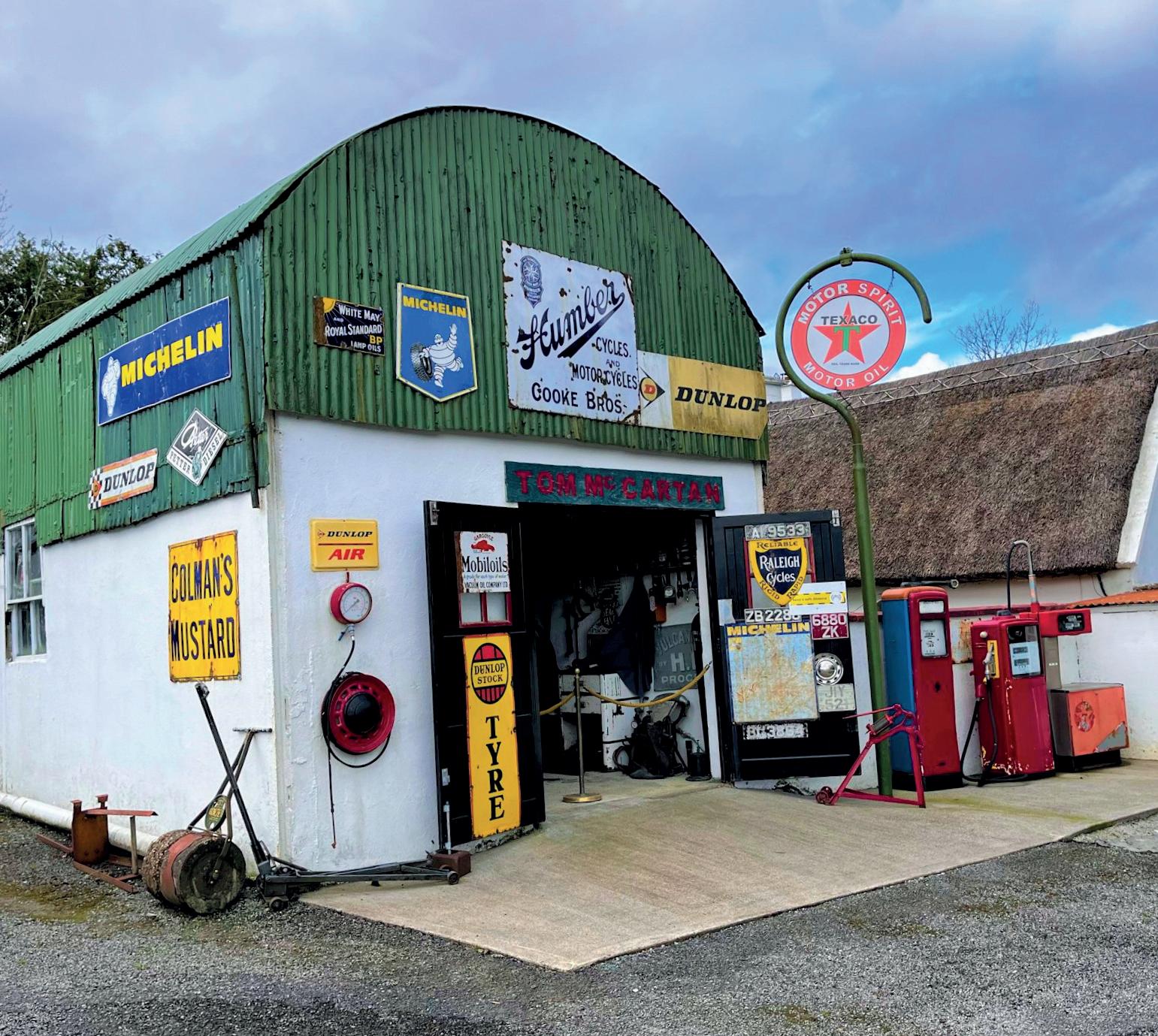
Brian Kennedy opened the museum “about 20 years ago” and explains his rationale: “I felt we were losing our heritage. That would have been a shame because young people deserve to have the chance to really feel the lived experience of their parents and grandparents. It helps them to understand where they come from.”
Kennedy, who along with his wife Teresa, runs a guesthouse and restaurant adjacent to the museum, further explains his own personal passion for “the old ways”, and the context which eventually culminated in his opening of the Folk Museum.
Located outside of Ballinamore, in the townland of Aghoo, Glenview Folk Museum is incorporated into a building, which was once a bailiff’s house, one of three in the townland operating on behalf of Lord Lowther, who owned an estate in the area.“I just love the artefacts; the heritage is very important to me,” he says, adding: “There was a local priest here and he tried to get a Museum going in Ballinamore. I had artefacts that I was willing to donate to the museum. However, it never went further.
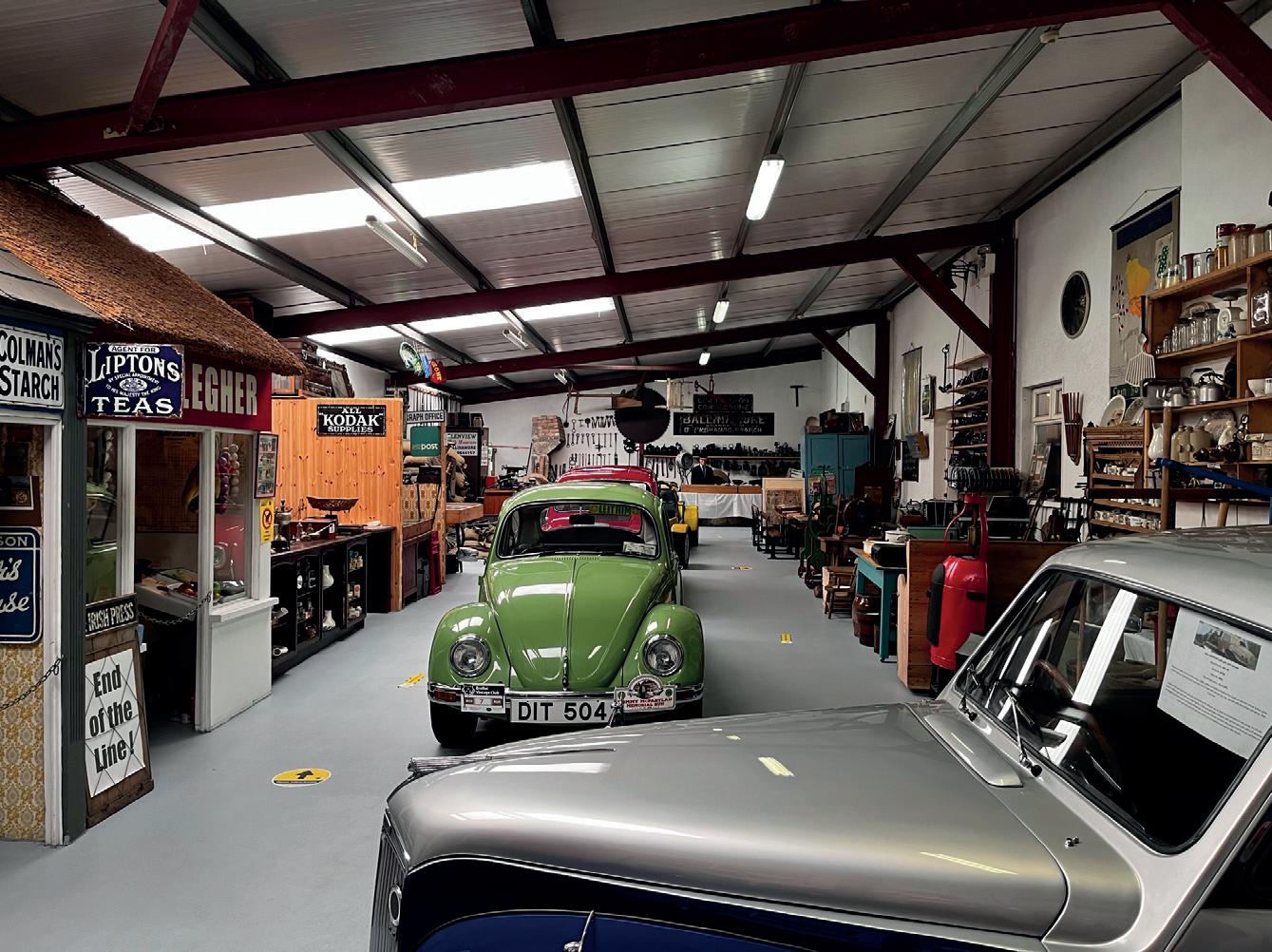
“That is where it initially started. I started collecting mostly agricultural tools and machines, but I quickly realised that I was leaving other interesting artefacts behind me. So, I decided that I would just collect everything that came along that I could afford to buy at the time, although it would usually be stuff that needed a fair bit of restoration.”

With his role alongside his wife Teresa, running the museum, guesthouse and restaurant, Kennedy is a local entrepreneur whose entire income is centred around an erstwhile booming tourism industry.

Historically, he outlines that their main source of business was from English anglers, although this has declined significantly in recent years. Kennedy rationalises: “The anglers changed from the older-style English angler to the more modern one. Similarly, there are now so many private lakes in England, stocking carp whereby anglers can get out of a car, and go straight to the lake without having to endure any hardships.”
However, describing the county’s natural beauty, Kennedy outlines how Leitrim has a special place in that it is “one of Ireland’s most naturally unspoilt counties”.
During the Covid pandemic, Leitrim had among the lowest number of confirmed cases in Ireland, “so when people went on their holidays in 2020 and 2021, a lot of them came to Leitrim”.
“It is a place that they would never have previously thought to come to, but now they realise that there is so much going on in Leitrim,” Kennedy reflects, adding: “The peace, the quiet, the friendliness of the people, all that has been recognised by an ever-greater number of people. Meanwhile, the natural beauty of the county cannot be overstated. We have the hills, we have the lakes, and the prominence of flora and fauna is significant. It is truly unique in that sense.”

Overall, the museum has several impressive collections, comprising 7,000 antique, historical, and novel items ranging from pre-famine Ireland to the recent past.

In keeping with Leitrim’s rural history, there is an impressive array of farmyard equipment, a collection of horse drawn agricultural machinery, and a thresher which, Kennedy elucidates, “show the skill and ingenuity of the designers and builders of early industrial and farming equipment”.
Another prominent feature is the museum’s ‘street scene’, which contains several reconstructed shops and a pub, all of which are stocked with an assortment of period-accurate products and equipment. Included in this section are restored examples of transport including both horse-drawn and
vintage motor vehicles. The museum also has an impressive collection of over 4,000 egg cups from all over the world, which were donated to Kennedy from two families in Dublin.

Kennedy tells of the latest additions to the museum, including highly prized items from the late author and Leitrim native, John McGahern, whose novels such as Amongst Women and That They May Face the Rising Sun have immortalised 20th century rural Leitrim life in literary form. A McGahern enthusiast, Kennedy promotes the legacy of the author, and says that his roots in Leitrim ought to be celebrated locally.
He tells of how visitors from far away, including Australian and American visitors to the museum, frequently ask him about the late author. “There could be so many things done in our community in Ballinamore, with McGahern weekends, festivals, and writers’ weekends.”
He further explains that, ideally, looking to the future: “There would be a serious focus on a McGahern centre in Ballinamore which would probably involve other areas in Leitrim that he was involved in.
“Considering the fact that he spent most of his life around here in Ballinamore, it would be lovely to see a visitor centre opened up – perhaps in the derelict courthouse building.”
Susanne Kerins, Head of Marketing at Cora Systems, talks to eolas Magazine about the company’s journey, how it has supported Leitrim people into work, and the task of running a global company from a north-western town.

Founded in 1999, Cora Systems provides enterprise project and portfolio management solutions to global organisations and government agencies, giving project managers and C-level executives “the control, governance, and insight to make better decisions”. The rise in online systems, necessitated by the rise of remote working, has led to something of a boom in business for the Carrick-on-Shannon company, with Cora having experienced growth of 228 per cent last year, according to Kerins.
Despite over 180 staff based all over Ireland, Britain, Europe, and the United States, being headquartered in Carrick-on-Shannon’s Mercantile Plaza is central to the ethos of the company and places it in the heart of the county town. “Our CEO, Philip Martin, has a huge sense of place here being from the region,” Kerins says, adding: “His whole idea of setting up the company was about creating jobs in the local area. Philip is a huge promotor of the development of County Leitrim and is actively involved in the leadership of the County Enterprise Board, Leitrim Chamber of Commerce, and the IDA regional development programme. He has huge pride in this region, and he wants to see it grow. Our headquarters will remain in Carrick-on-Shannon; it will always be here and that is because we want to ensure that we continue to offer local people jobs and produce more and more jobs for the region.”
Covid, Kerins explains, has acted as an accelerant for Cora, which already utilised “mostly flexible working patterns” prior to the onset of the pandemic. “The
pandemic definitely opened up the talent pool for us, because it gave us a wider access to people from across the country and world. While we continue to provide jobs here in Leitrim, the Covid experience has broadened that path beyond the region.”
With the effects of the housing crisis still being felt deeply in cities, Leitrim, Kerins contends that “Leitrim is a lot more affordable”, further explaining: “The reduced cost of living is a huge thing that attracts people here. There is also the added benefit of moving back home to the county and having a better work-life balance.”
Referencing the company’s experience of “hypergrowth”, Kerins outlines Cora Solutions’ vision for the short to medium term. “In order to sustain our growth, we are planning on recruiting 200 new staff members by the end of 2024.” If the company continues to expand globally, Kerins believes there may be a need to open additional offices in the United States and Europe but reiterates that “our home will always be in Carrick-on-Shannon”.
Originally from County Louth, Susanne Kerins studied marketing at Atlantic Technological University Sligo, and decided to stay in Sligo. After graduating, she worked for a Sligo engineering company for one year before beginning her career with Cora Systems.

The Dock, Carrick-on-Shannon’s arts centre, is the focal point of arts in County Leitrim, helping local artists to internationalise their work. The Dock’s Director, Sarah Searson, talks to Odrán Waldron about the uniqueness of the cultural landscape of Leitrim.
Searson outlines how The Dock’s reputation is “primarily defined by visual arts, nationally and the performing arts regionally” adding: “I believe in a concept of the arts providing a range of opportunities to receive art, whether through performance, visual arts, or talks and workshop. The Dock is like a library for arts experiences.”
Explaining how The Dock has enhanced the reputation of Leitrim-based arts, she states: “If you live locally and produce art, there is an opportunity to get involved and to develop your own creativity. The Dock is an organisation with a level of porosity that delivers an interesting dynamic programme but also facilitates a wider community to make things happen.”
Situated on the banks of the River Shannon, The Dock – a play on the building’s former role – is located in Carrick-on-Shannon’s iconic 19th

century courthouse building built in 1822 by William Farrell, a prominent Dublin-based architect active throughout early to mid-19th century Ireland, during the Georgian and early Victorian period, who was known particularly for his church and institutional designs. The building is connected to what is now the headquarters of Leitrim County Council, and was once a gaol, via underground tunnels. A Georgian mansion, previously the house of the presiding judge, sits behind the building.
Searson explains how the building’s history informs the approach taken by The Dock for the artwork exhibited within its walls. “Behind the building, where Leitrim County Council is headquartered now, was the gaol. As you approached, there were two gates through which you could see into that campus. There is an institutional memory in the building where you can see some of those ideas and very often with the visual arts, we will lean into that.
“The courthouse building came into a state of disrepair in the mid-1990s, and the community successfully fought for its
restoration. It was reinstated for use in 2005. Since then, it has become a flagship building in terms of its meaning and place within Carrick-on-Shannon. I think it is very much an established part of the community, particularly through the work that The Dock undertakes with young people.”
Searson believes the arts sector has been empowered in Ireland through its support in smaller towns, facilitating excellence.
Simultaneously, Searson emphasises the role played by arts centres at local level across Ireland in enhancing the education of young people: “When arts centres are resourced properly to engage in effective outreach projects and programmes that support people’s creativity, they can actually change the whole legibility of a town.

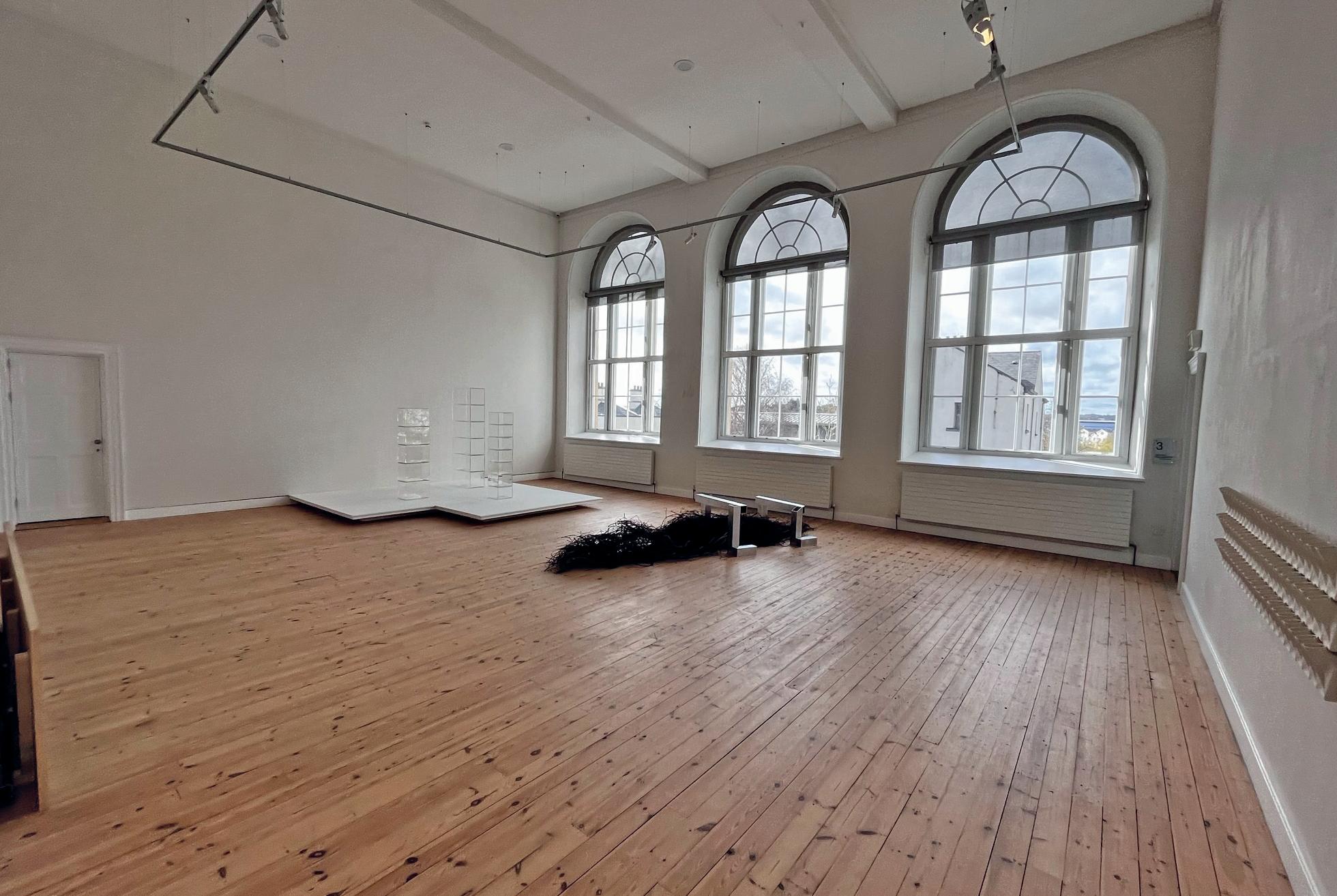
“When you look at the resources of Carrick-on-Shannon, such as The Dock, the cinema, the gym, and the vibrant food culture, each of those cultural aspects contribute to an enriched quality of living. They provide the town with a uniqueness, improving its overall attractiveness and vibrancy.
While showcasing some of the leading artists in Ireland, The Dock is also working to develop several digital resources that local schools can use. “The idea of being from Carrick and from Leitrim and being able to provide this cultural hub for schools in the county pervades far beyond the artwork itself. It is very much about cultivating ideas.
“The Dock seeks to nurture cultural interest particularly from a young age to influence their connection with art over a lifetime, so that when young people are at college or in later working life they are equipped to get involved in cultural debate, and critical discourse about arts and culture.”
Describing the “balancing act” of programming arts within the rich cultural heritage of County Leitrim, Searson says:
“The Dock produces five big exhibitions annually, each of which incorporate between two to five artists.” Illustrating the gallery’s commitment to exhibiting emerging and established artist and interesting artistic collaborations, upon the visit of eolas Magazine, the gallery is showing a commissioned collaboration between Katherine Sankey, utilising video, sculpture, and drawing to connect with senior Irish artist Corban Walker.
“We invest heavily in those exhibitions to connect with people with the ideas and concepts at play,” Searson explains, concluding: “Additionally, we have a lot of smaller tangential events where we commission people – particularly younger artists – to undertake smaller interventions, often to reflect on their practice, so we can mediate some of their ideas beyond their studio and into the wider world using The Dock as a conduit for artistic learning.”
Profile: Sarah Searson
Sarah Searson has been Director of The Dock since 2015 and will resign the role in May 2023. She led the organisation through Covid and secured major capital funding for refurbishment in 2017.
Searson has lectured at Dublin Institute of Technology (TID) and University College Dublin (UCD). She also served as Arts Officer for Dún Laoghaire-Rathdown County Council for five years.
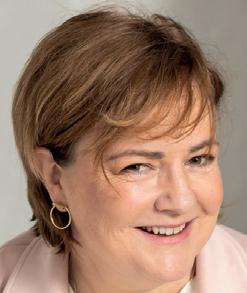
 REGIONAL FOCUS: LIMERICK COUNTY COUNCIL
REGIONAL FOCUS: LIMERICK COUNTY COUNCIL
The Covid-19 pandemic and its change in work practices has enhanced the importance of ensuring the rollout of the National Broadband Plan in Leitrim, with government investing €56 million and over 10,000 commercial premises signing up to the scheme which will deliver high-speed broadband and enhance job creation and remote work opportunities for Leitrim’s 36,000 residents.

In terms of broadband connectivity, the Government is investing €56 million worth of high-speed broadband infrastructure in County Leitrim. The Metropolitan Area Network (MAN), a network of ducting and fibre optic cable, has been installed in Carrick-on-Shannon and Manorhamilton. This can be used to provide services including telecoms, internet access, television, telematics, and CCTV.

The targets of the National Broadband Plan (NBP) include:
• between 70Mbps and 100Mbps available to at least 50 per cent of the population with a majority having access to 100Mbps;
• at least 40Mbps, and in many cases much faster speeds, to at least a further 20 per cent of the population and potentially as much as 35 per cent around smaller towns and villages; and
• a minimum of 30Mbps available to all properties, no matter how rural and remote.
County Leitrim will benefit from the rollout of several
government-led broadband schemes including the Rural Broadband Scheme and Broadband for Schools, providing a strong advancement in relation to the digital infrastructure that has taken place within the telecommunications sector in the county.
The Covid-19 pandemic with its associated social distancing has led to a paradigm shift in terms of accepting remote work and social practices and these have become extensively prevalent. It is anticipated that many of the trends that developed in response to Covid-19 will remain, potentially speeding up the reliance on broadband.
Furthermore, the county is part of the Atlantic Economic Corridor (AEC). Under this platform, the AEC Hub Network has been developed which classifies all enterprise hubs and co-working spaces along the AEC. From this, a shared online booking system has been developed to coordinate and promote the facilities. County Leitrim has nine digital hubs within this project offering hot desk, co-working, and office accommodation for those looking for flexible office accommodation.

Leitrim County Council has recently embarked on a transformational project to provide office space and a supportive innovation focused ecosystem to growing companies in the region. The acquisition of the 112,000 sq ft Carrick Business Campus by Leitrim County Council will provide office space to companies of 10+ employees.
This fills a gap in the county for micro enterprises and startups progressing from digital hubs. It will also be an opportunity to attract indigenous small to medium enterprises (SMEs) who are planning to expand. The campus allows Leitrim to compete for FDI investment, either as a landing space, a second site operation, or a new investment into Ireland.
Carrick Campus was built to an exceptionally high-quality specification in 2002 and has been largely vacant since MBNA exited its Irish operation almost a decade ago. Avant Money currently occupies 20 per cent of the 112,000 sq ft. A €2 million investment in redesigning two floors of over 56,000 sq ft is currently underway to facilitate flexible, collaborative workspaces to include individual offices and breakout spaces.
Leitrim County Council Chief Executive, Lar Power comments that this campus will support existing
micro enterprises providing space for them to scale and grow. Power highlights the importance of supporting its anchor client, Avant Money, currently employing 250 people, in its ambitious growth plans by building a financial services cluster based on the 20-year knowledge pool of financial services in Leitrim.
Leitrim County Council’s Head of Economic Development, Emer Connolly noted that the vision is to create a supportive eco-system to promote creativity, learning, research, and innovation in a collaborative environment. A Campus Manager will be recruited to work closely with key agencies, such as the Mayo Sligo Leitrim ETB and Atlantic Technological University to develop programmes for the campus companies in the area of innovation, new product development, and green business initiatives.
The campus is ideally configured to offer a second site to operations
headquartered elsewhere and can act as a disaster recovery office site for companies looking to mitigate risk of having all their employees in a single office or single geography. It can offer competitive rental rates relative to city locations.
While located on its own landscaped campus, the building is close to food outlets, a retail park, and leisure centre. The building is accessed from the strategic N4 Dublin-Sligo road and is located within walking distance of the town centre of Carrick-on-Shannon. The campus provides 588 car park spaces, ample bike parking, and plans to install EV chargers on the premises in Q2 2023. Ireland West Airport is located 40 minutes from Carrick-on-Shannon and connects more than 700,000 people a year to UK and international destinations. The campus is a two-hour drive from Dublin Airport.
This Grade A office campus offers high security and broadband connectivity. It provides support throughout to all desks. Automated badge access control is in place at all entrances and at individual company internal doors.

The acquisition and re-development of the campus is funded by Rural Regeneration Development Fund (RRDF).
For companies seeking manufacturing or lab facilities, full planning permission is in place for a 21,818 sq ft Advanced Technology Building, located at IDA Business and Technology Park, Carrickon-Shannon.
Nine digital hubs offer flexible hot desking, office and co-working facilities in County Leitrim
Leitrim is a great place to live, work and invest:
• A location of choice for locating

Leitrim County Council works collaboratively with development agencies Enterprise Ireland and IDA Ireland to support indigenous and inward investment in the county. The council can offer access to expert knowledge and local intelligence and can ensure a faster and more successful relocation or expansion.
Support is available to both national and international companies of all sizes that are considering or wish to relocate to or expand in Leitrim and includes:

• Sourcing property solutions;
• Marketing support;
• Advice on recruitment and training;
• Introductions to appropriate networks, suppliers, agencies, and educational establishments; and
• Help understand and navigate potential market opportunities.
your business, with quality office accommodation and serviced sites.
• Leitrim has a range of indigenous and international employers across multiple sectors of medtech, technology, manufacturing, and food and drink.
• Leitrim offers a high-quality life with excellent outdoor amenities, 16.5km of the Shannon Blueway, 100km of water trails, and the oldest rowing club in Ireland based in Carrick-on-Shannon.
• Leitrim can offer affordable housing, childcare, and excellent schools.
• Leitrim can offer career progression and development with Atlantic Technological University located within 30 minutes offering a talent pool of 3,000+ graduates.
Leitrim is home to international as well as indigenous companies in industries such as medtech, advanced manufacturing, technology, and international financial services. Leitrim has a 20-year history of financial
services with MBNA at one time employing 1,000 employees. Today, Avant Money continues to build on this financial knowledge skill base in the region. Leitrim has a long tradition of multinational companies that have set up in the county and scaled their international operations including Vistamed, MCI, and Masonite. In 2022, FDI employment grew by 6.3 per cent in the region and many companies are actively recruiting. Indigenous entrepreneurs have chosen Leitrim to build and grow their own international companies of scale, including King and Moffatt and Cora Systems. These global industry leaders provide diverse senior level roles in engineering, applied sciences, logistics, supply chain management and more, with attractive and significant career progression opportunities.
T: 071 962 0005
E: info@relocatetoleitrim.ie
W: www.carrickbusinesscampus.ie / www.relocatetoleitrim.ie
Currently serving the fourth year of a five-year term as county chairman, Stenson has firm roots in Leitrim GAA, having been a football referee for 33 years.
Describing his current role as “keeping things running as smooth as possible”, the Leitrim man emphasises the importance of the GAA to the social fabric in rural Ireland, stressing the need to support small clubs and ensure they are adequately resourced.
“Many people talk about intercounty games and getting to Croke Park but that accounts for less than 5 per cent of players. I am talking about the 95 per cent of the players which never see county but are playing football and hurling. They are the people which the county board must look after and care for.”
On the challenges of rural depopulation and fielding club teams in the county, Stenson remarks: “Emigration has been with us since day one in Leitrim,” adding: “We had lots of emigration up to the 1970s. People had to go because there were no jobs. But now emigration has started again for a different reason. It is the thing to do; youngsters can go and travel for a few years. As a result, we are still losing our best.
“While we were losing them for one reason 50 years ago, we are now losing them for another. But the original factor continues to play a role; we do not have the jobs to keep young people close enough to home. Many of them feel they have to go to Dublin, or they have to go somewhere else for their careers. We
need an industrial base in Leitrim. Maybe we have taken the first step to achieving it as a Leitrim man has been appointed CEO of the IDA. Hopefully that will help us to keep our best and brightest within the county.”
Despite the challenges presented by emigration from the county, Stenson acknowledges that many in the Leitrim diaspora have supported the county board from afar. “The New York diaspora is absolutely splendid. I cannot speak highly enough of them. They would do anything for us.”
This is reflected in the fact that GAA in Leitrim is currently sponsored by JP Clarke’s Saloon on McLean Avenue in Yonkers, New York. Owned and run by an Irish-American family with deep roots in the county, JP Clarke’s was the first US-based business to
 Enda Stenson, the chairman of Leitrim GAA, talks to Ciarán Galway and Odrán Waldron about challenges for the association in Leitrim, the future of the GAA, and ambitions for the county.
Enda Stenson, the chairman of Leitrim GAA, talks to Ciarán Galway and Odrán Waldron about challenges for the association in Leitrim, the future of the GAA, and ambitions for the county.
sponsor an intercounty team in Ireland. “We had nobody and then Seamus Clarke and his wife Caitríona Clarke, natives of Gortletteragh and Drumshanbo respectively, were approached and agreed to sponsor us. How can we show our gratitude? It is a huge commitment for people like the Clarkes; they are a family-run business, and they did it for their county which I think is worth far more than money can buy.”
Continuing with the theme of migration, Stenson insists that “depopulation of rural Ireland is a huge problem” for the GAA.
“The bedrock of the GAA has been rural Ireland. I know it has essentially moved to the urban centres. However, as the big clubs in the big cities grow, we all know that it is costing a certain amount of money to keep those clubs operating. This phenomenon is bordering on a certain level of professionalism. Counties like Leitrim and clubs in other rural regions cannot keep up with that.”
Whilst expressing his “great faith” in the new GAA president, County Armagh’s Jarlath Burns, fears for the future of GAA sports abound for Stenson.
“I do not know what type of GAA we will know in 20 years’ time because the road that we are on is unsustainable. We are solely dependent on our friends throughout Leitrim, our Leitrim Association in Dublin, and our Leitrim
Association in New York to fund our county teams.”
This is a challenge which is further typified by the decline of hurling in the county, with only two hurling clubs currently competing. “We have Carrick Hurling Club and Cluainín Iomáint. The enthusiasm of the people that play it cannot be questioned but the finance to keep that on the road is in doubt.”
Describing it as “our national game”, Stenson adds that he “would be disappointed to see the demise of hurling” in the county, outlining his belief that “the only reason it is being questioned now is because of money”.
Although emigration has presented its challenges for Ireland’s least populous county, Stenson explains how the sports facilities in Leitrim enable the county to continue “punching above our own weight”.
“Practically every GAA club in the county has its own grounds, around 70 per cent of them have their own gym and clubroom, and I would say that around 20 per cent have an all-weather pitch. We have an excellent centre of excellence up by Annaduff with allweather facilities. That is a significant facility for Leitrim to have.”
Another asset to the GAA in Leitrim, Stenson highlights, is the ever-present passion for the sports among supporters. “We have passion. If you were in Páirc Seán Mac Diarmada when Leitrim beat Laois in the National
Football League in March [2023], you could see the passion. People going wild with excitement.
“While some might wonder what level we must reach, we do not have to reach any level at all for that atmosphere. You win at the level you are at, and people are happy with that. Someone from Kerry or Dublin may feel that Division Four means nothing, but the wins are huge. They mean everything to us.”
The county’s supporters and facilities allow Stenson to be hopeful for the future. He concludes his discussion expressing his ambition for the county to achieve promotion to Division Three, and to be “competitive” in the Tailteann Cup.

Enda Stenson is the chairman of Leitrim GAA, a role he has held since December 2019. Before this, he was a football referee for 33 years, officiating three Connacht Senior Football Championship finals.
In addition to his role with the GAA, Stenson is a member of Leitrim County Council, having been first elected as an independent in 1999 representing the Carrick-on-Shannon LEA.
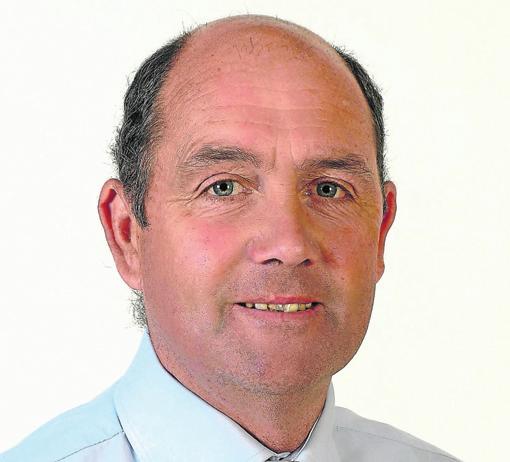
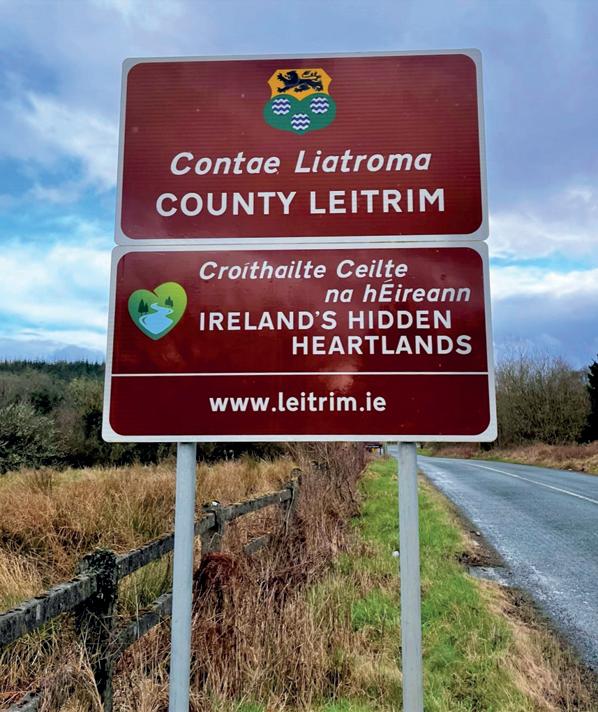
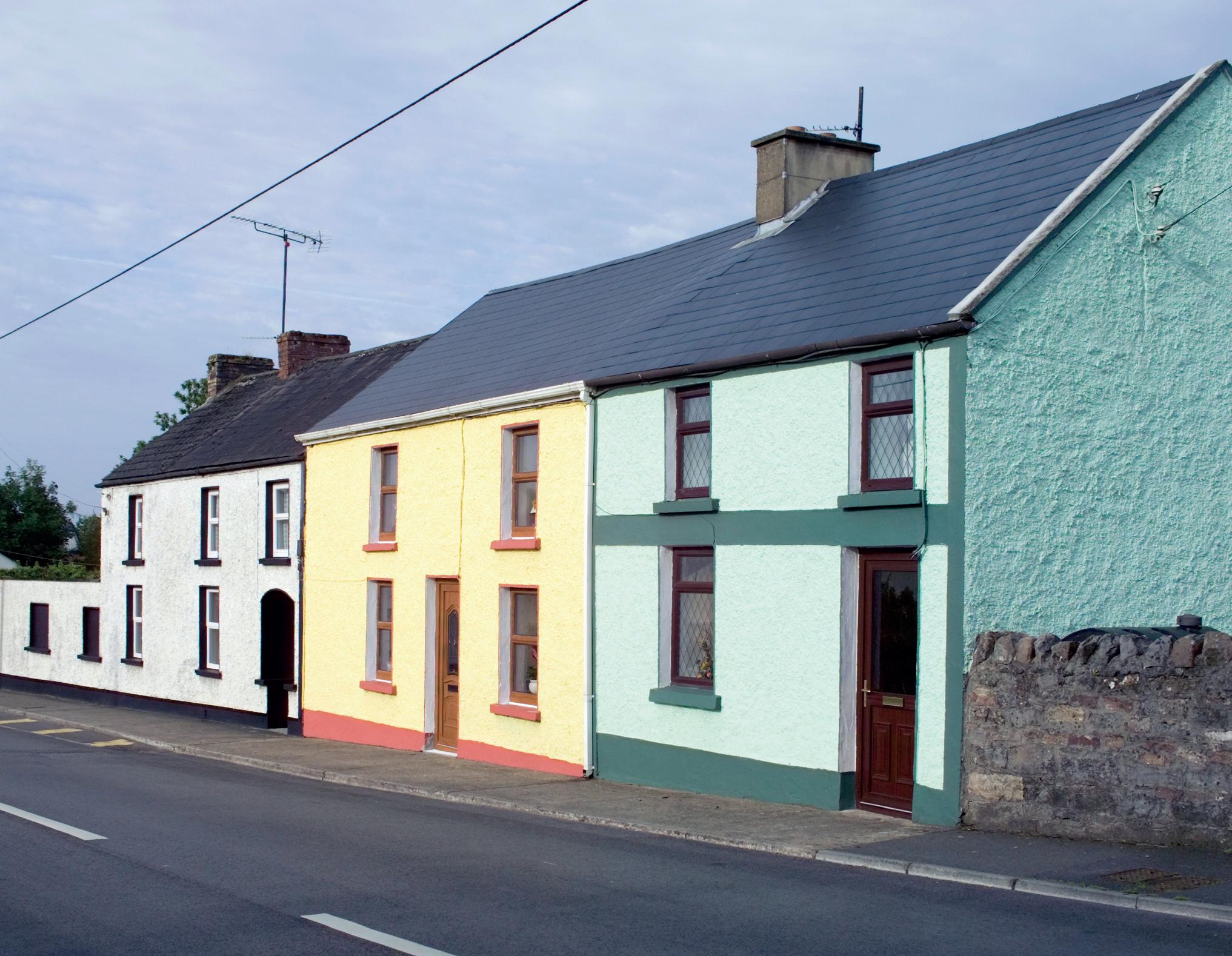
Average Leitrim house price – €171,718
• 4.6% increase between 2021 and 2022
• Lowest in the State
• €136,779 below national average listing price
• 30% below Celtic Tiger prices
Average new-build house price – €175,925
Source: Daft.ie
Average Leitrim rental price – €930 per month
• 19% increase between 2021 and 2022
• Fifth largest percentage increase in rent prices in 2022
• Only county in the State below €1,000 per month
Source: Daft.ie
Total housing stock 18,657
• 3% increase in housing stock between 2016 and 2022
• 2,897 vacant dwellings
• Vacancy rate 16%
• 692 less vacant dwelling in 2022 compared to 2016
• 19% less vacant dwelling in 2022 compared to 2016
• 1,681 unoccupied holiday homes not included in vacant dwellings number
• 17% of vacant properties are abandoned farmhouses
• Population increased by over 3,000 between 2016 and 2022 (10%) while the housing stock went up by just over 600 (3%)
• 21% decline in new dwelling completions in 2022
• 5% increase in 2022 of units granted planning permission
• 20% growth in standardised average rent in new tenancies in Q2 2022 was in Leitrim – highest in the State
56
191
What are your most significant priorities as a TD for the Sligo-Leitrim constituency?
To assist the local authority and other agencies in continuing the investment programme for the county in the towns, and rural areas. This entails tourism, industry, broadband, and improved roads and leisure facilities.
What is unique about representing County Leitrim?
Leitrim may have the smallest population of any county in Ireland but it is unique in its unspoiled and undeveloped potential. The quality of life is excellent and it is a great place to live and raise a family.
What are the most pressing challenges currently facing your constituents?
I think the most pressing is affordable housing. We had a glut of housing post the boom Celtic Tiger years, but now there is a real shortage, with many developers not convinced to invest in new housing developments. I hope the extension of the Croí Cónaithe scheme to cities and rural areas will allow the many vacant houses to be developed into rentable homes for many.
What extent has the post-pandemic recovery delivered a socioeconomic dividend for County Leitrim?
Working from home is now part of life, with many availing of remote working hubs spread across the county. Many have adopted the hybrid model, choosing to remain in the county on days when previously they may have travelled. That is a fantastic dividend for the county.
How can County Leitrim best showcase its cultural heritage?
There are many festivals across the county, showcasing our music and literary heritage and attracting many visitors, this should continue to be the focus. Many areas across the county with connections to our cultural heritage should do more to adopt and focus on them.
What is your vision for the future of County Leitrim?
As the best place to live, work, and raise a family. The county has a wonderful quality of life, low crime levels, and many amenities, with more in development. Additionally, it has high-quality sporting facilities and schools. All of these assets need to be further developed and enhanced to realise our vision. cxxxx
Frank Feighan is a former Minister of State with responsibility for Public Health, Well Being and National Drugs Strategy. First elected to the Dáil in 2007 for the constituency of Roscommon-South Leitrim, Feighan was nominated by the then Taoiseach for the Seanad in 2016. He was elected as a TD for Sligo-Leitrim in the 2020 General Election.
Feighan lived in both Australia and the United States in the 1980s, and has a background in business. He loves music and he is a member of Boyle Musical Society and his local choir.
 REGIONAL FOCUS: LIMERICK COUNTY COUNCIL
REGIONAL FOCUS: LIMERICK COUNTY COUNCIL
Shared Services 2023 is taking place in Dublin on Tuesday 20th June, and will bring together key stakeholders, leaders and managers who are involved in transforming the public service through shared services.




This Conference will have a range of expert speakers from Ireland and beyond who are spearheading the transformation of shared services and will examine not only the vital role of technology, but also the critical importance that transformational leadership plays in this journey. It will also explore important questions about the future of work and digitally enabled skilled workers particularly in the context of shared services.
The Conference is being organised by the National Shared Services Office (NSSO) in partnership with the Department of Education, the Health Service Executive and the Local Government Management Agency.
Speakers include:
César Pestana President eSPap, Portugal
Bernie
Barbara Ubaldi Head of Digital Government and Data Unit OECD

Helen Gallagher Group Chief People Officer Org

Kevin Kelly, General Manager –eHealth and Disruptive Technologies Health Service Executive





Barry Lowry, Government Chief Information Officer, Department of Public Expenditure, NDP Delivery and Reform
Hilary Murphy-Fagan CEO, National Shared Services Office
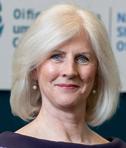


Libby Mason Partner EY


Joe McDonagh, Associate Professor of Business Studies Trinity College Dublin


Micheál Lenihan Head of ETB Payroll Operations Department of Education
Dermot O’Loughlin Director MyPay
Yseult Freeney, Professor of Organisational Psychology
Dearbhail McDonald Conference MC
This Conference is free to attend but registration is required as places are limited.

Martin Kenny, believes that investment in sustainable enterprise can reverse the trend of rural decline and depopulation in County Leitrim.
The most significant priority for the area is regional development, which includes the development of infrastructure and the support structures to ensure businesses and small enterprises will be developed and retained in the region to provide sustainable, high-paid employment. A large proportion of the young people in Sligo and Leitrim attend third level, however, there are not sufficient jobs for graduates in the area.
Sligo town in particular is hugely underutilised and has the potential to be a major hub for employment and population expansion. Opportunities in developing renewable energy and the spin-offs from that can present such a bright future for the region.
There is a major imbalance in Ireland as so much of our economic development and infrastructure is in and around the capital, where it is becoming unaffordable for people to live.
What is unique about representing County Leitrim?
County Leitrim has the lowest population in the country and has been neglected in many ways as it has poorer land from an agricultural perspective, and little industrial or commercial development. Therefore, I represent one of the places that has been given the least, but also has the most potential.
What are the most pressing challenges currently facing your constituents?
The challenges are similar to those facing most counties, particularly around housing, and access to health and mental health services. Rural decline is also a serious problem, where many of our rural areas continue to have a falling population since the time of the famine.
To what extent has the post-pandemic recovery delivered a socioeconomic dividend for County Leitrim?
The opportunity for some people to work remotely has opened up a level of opportunity. Although access to adequate and reliable broadband services is still an issue in some parts of the county, there are also excellent broadband facilities in the new remote working hubs and in the towns across the county. As we know, good internet connection puts you at the centre of the universe, no matter where you are geographically. The unspoilt beauty of County Leitrim has been discovered by people who holidayed at home during the pandemic, and we are seeing a return of many who had visited the county on an ‘active holiday’ – cycling, camping, and surfing.
How can County Leitrim best showcase its cultural heritage?
Novelist John McGahern is one of the great sons of Leitrim, whose books sold all over the world. We used to have the John McGahern Summer School annually, which has unfortunately fallen away now. I think there is an opportunity there to reinvigorate that. Leitrim also has, of course, the home of 1916 signatory Seán Mac Diarmada in Kiltyclogher. It is a small rural cottage, so typical of where the poor and landless Irish survived for generations.
My vision for Leitrim is that we would reverse the rural decline and depopulation through investment in sustainable enterprise. To do so, we will need to grow employment opportunities, along with the development of first-class communications infrastructure, as well as build on the excellent leisure, cultural, and sports facilities throughout the county.

Martin Kenny is a twice-elected TD representing the Sligo-Leitrim constituency. Kenny lives in Aughavas, County Leitrim, with his wife, Helen, and their four children.
Before he was elected to the Dáil in 2016, Kenny was a member of Leitrim County Council for over a decade. Upon his election to the Dáil, he was appointed as Sinn Féin’s spokesperson on agriculture, food, and the marine. In the party’s front bench reshuffle in April 2023, Kenny became spokesperson for communications and transport.
Energy Ireland 2023 will bring together all the key stakeholders in the Irish energy sector to discuss and debate the key drivers of the energy transition and the current energy price crunch. It will look forward to the developments that will decarbonise Ireland’s increasingly integrated energy system.
Key themes for 2023:
• Geopolitical context to the energy transition
• Improving Ireland’s energy security
• Developing Ireland’s offshore wind energy resources
• Future electricity system development
• Decarbonising Ireland’s gas network
• Role of renewable energy technologies in the energy transition
• Importance of digital networks in Ireland’s energy future

• Eamon Ryan TD, Minister for the Environment, Climate and Communications
• Matthew Baldwin, Deputy Director-General DG Energy, European Commission
• Jim Gannon, Chair Commission for Regulation of Utilities

• Paddy Hayes, Chief Executive, ESB
• Tanya Harrington, Chair Renewable Energy Ireland
• Dave Kirwan, Managing Director Bord Gáis Energy
• Cathal Marley, Chief Executive Officer Gas Networks Ireland



• William Walsh, Chief Executive Officer Sustainable Energy Authority of Ireland

• Niamh McGovern, Partner, Arthur Cox
• Caroline Kuzemko, Reader in International Political Economy, University of Warwick
• Andy Kelly, Director, Afry
• Anouk Honoré, Senior Research Fellow The Oxford Institute for Energy Studies
• Joanne Moran, Generation Director, Energy and Power, Jacobs
• Klair Neenan, Managing Director SSE Airtricity
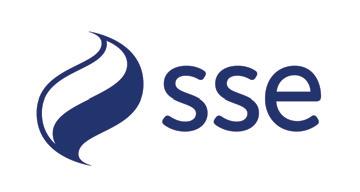
• John Reilly, Head of Renewable Energy Bord na Móna
• Richard Murphy, Partner, Pinsent Masons
• Andrew Hickey, Commercial Manager Hitachi
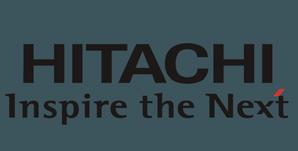
• Colm O’Neill, Partner, KPMG
• Brian Ó Gallachóir, Director MaREI Centre UCC
• Paul Mϋnnich, Director Agora Energiewende
• Catherine Sheridan, Head of Strategy Green Rebel
• Kevin O’Sullivan, Environment and Science Editor, Irish Times
• Michael Galvin, Director of Hydrogen and Sustainable Fuels, Simply Blue Group

• Muireann Lynch, Senior Research Officer Economic and Social Research Institute
• Peter Russell, Director Huawei FusionSolar and Storage Ireland
• Caoimhe McLoughlin, Partner, KPMG
• Darren O’Rourke TD, Sinn Féin
Main sponsors


Sponsors
Speakers include: Register
Technology Partner


